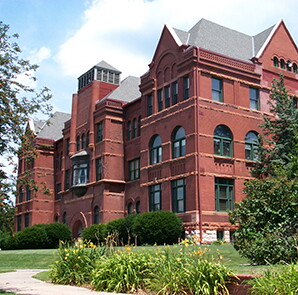Don’t blame the trees for your watery eyes and runny nose.
“We live in a forest and we planted this forest,” Nebraska Wesleyan University biology professor Dale Benham said, pointing to an 1872 tree-less map of Lincoln, Neb. “We’ve brought this on ourselves.”
Benham’s reference doesn’t mean he doesn’t have sympathy for allergy sufferers.
“It’s not the plants’ fault though,” said Benham. “They are doing what they are supposed to do.”
This year’s mild winter and warm spring have wreaked havoc on allergy sufferers. Pollen — the tiny egg-shaped male cells of flowering plants including trees, grasses and weeds — are being blown around in record numbers and much earlier than normal.
On March 20 — the official first day of spring —tree pollen in Lincoln measured at 558 grains per cubic meter, meaning most individuals with any sensitivity to tree pollen were experiencing symptoms.
Benham takes the official daily pollen count for the area from a pollen sampler located on the top of Olin Hall of Science. The numbers are reported by the media and provide a resource for those needing to understand why they are feeling so sneezy. Nebraska Wesleyan is one of 85 pollen count sites in the United States.
Pollen count was also the subject of Benham’s year-long sabbatical during the 2010-2011 academic year. His project included compiling pollen counts from the past 20 years with many of the records still in hardcopy files.
Benham’s goal is to analyze the data and make some evaluations: what variations have we experienced over the past 20 years, and why? Are certain pollen counts remaining the same? Has any one species changed dramatically over the years?
The analysis is important to scientists, doctors, allergy sufferers, and pharmaceutical companies who want to be sure their medications treat the right symptoms at the right time.
While his analysis has just begun, he was quick to point out specific cases. This year, for example, pollen counts are higher much earlier. Pollen counts continue to rise even at night when they are typically lower.
“It’s early and it’s bad,” said Benham. “Juniper trees are the big culprit as are elm.”
In 2007, for example, high pollen counts started and ended early. In 2010 — the year with record amounts of snowfall — high pollen counts didn’t hit until April and the biggest culprits to spring allergies hit at one time.
“We’re in for an interesting season,” said Benham. “The plants are smart.”
Those who want to keep track of pollen counts can visit www.nebrwesleyan.edu/pollen-count










